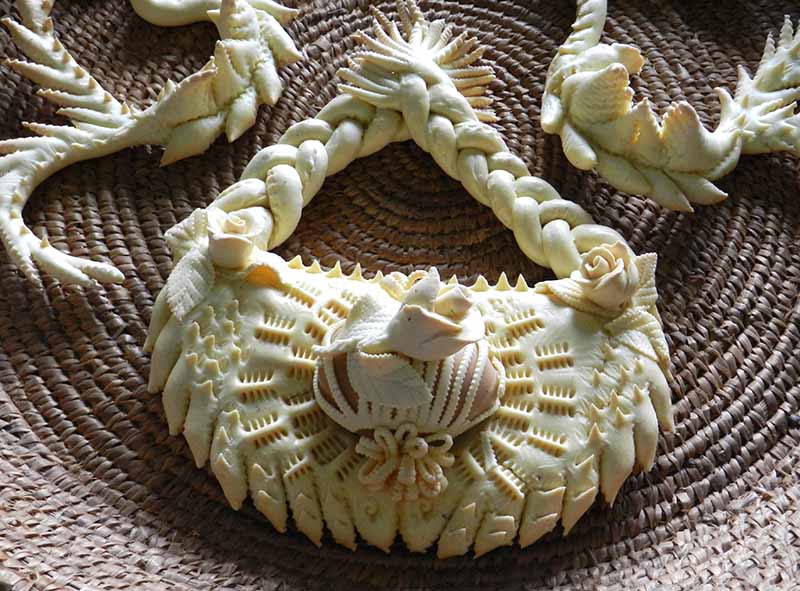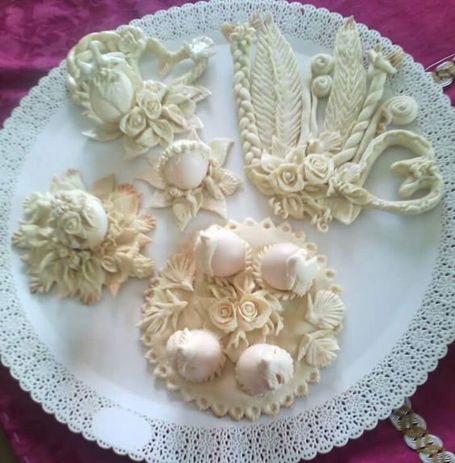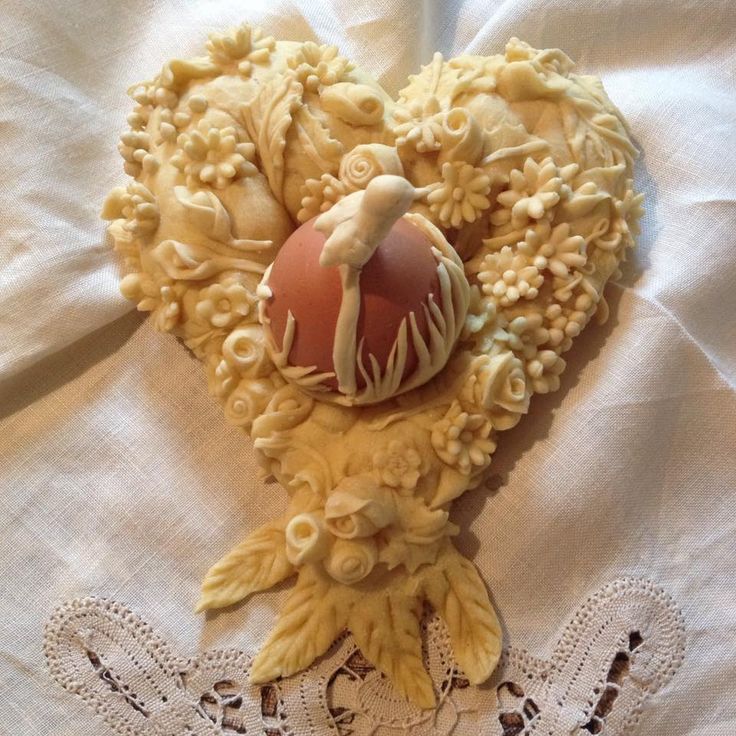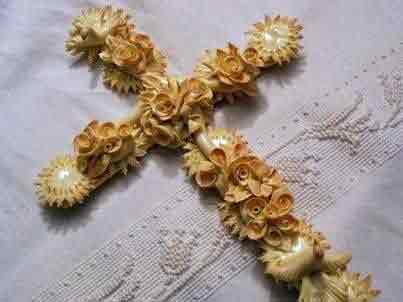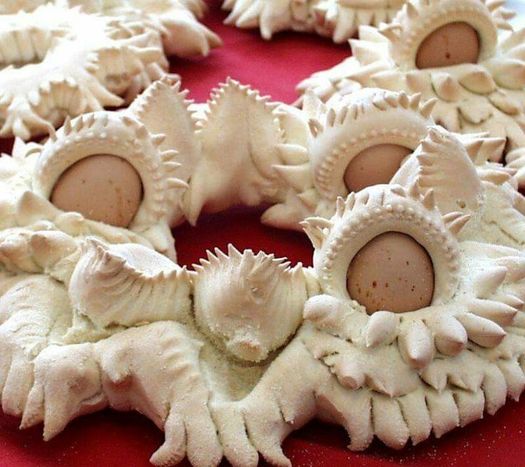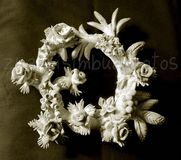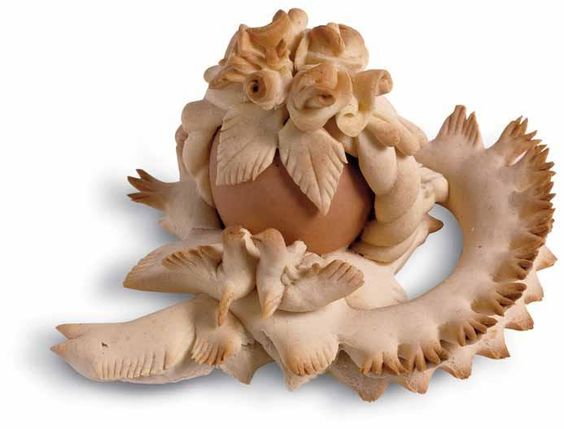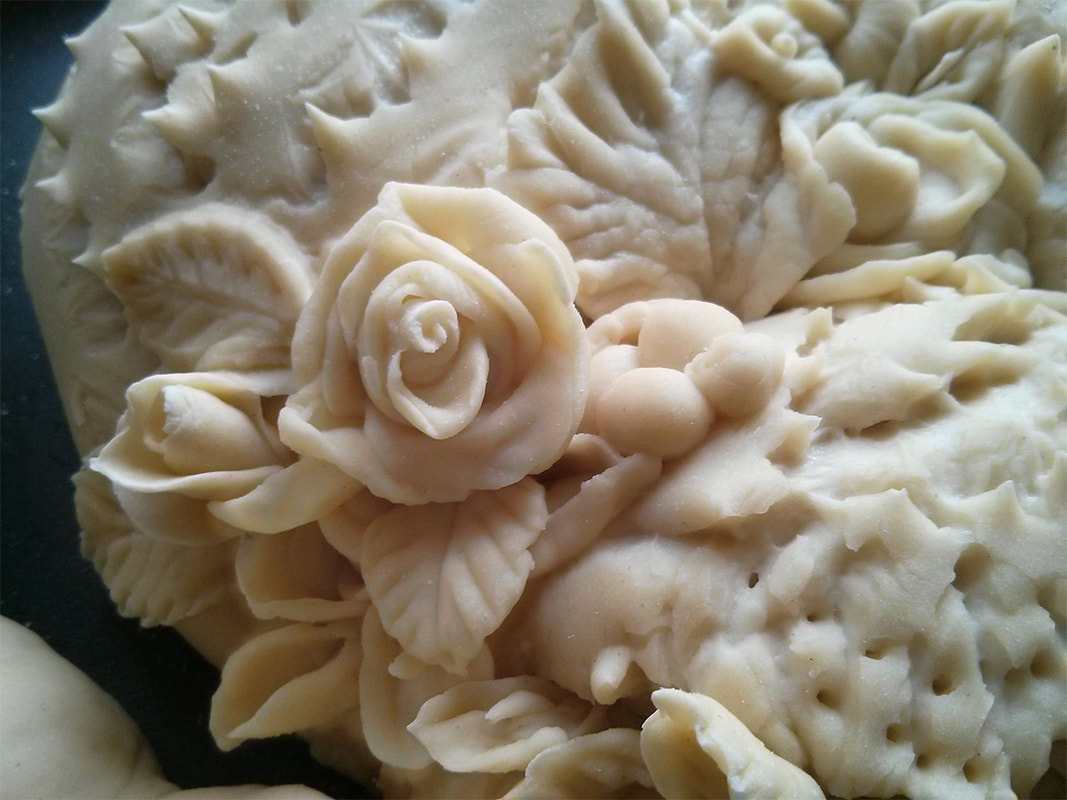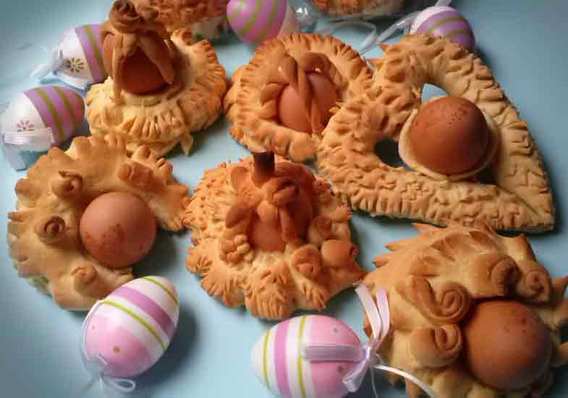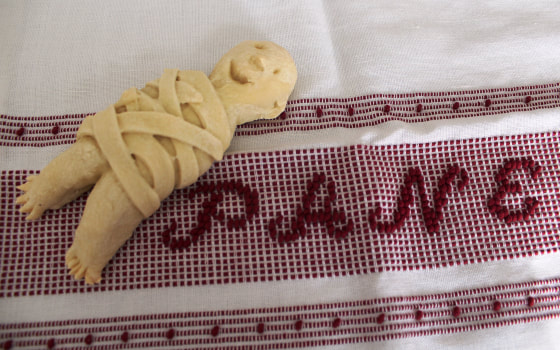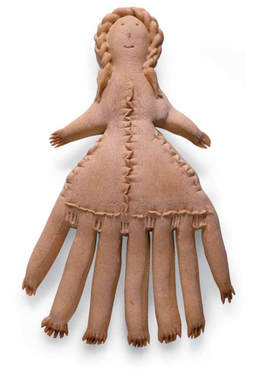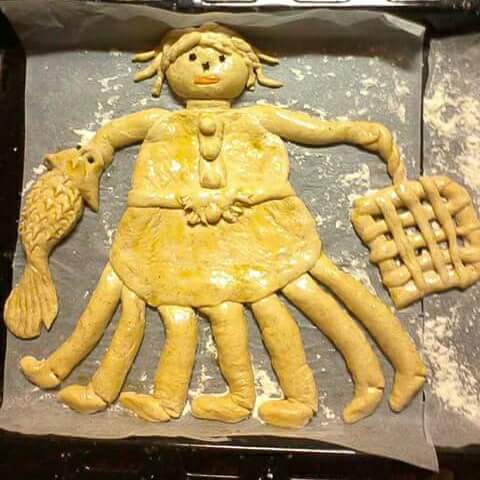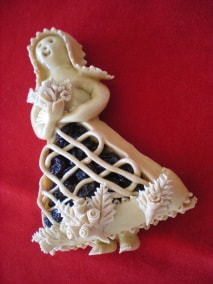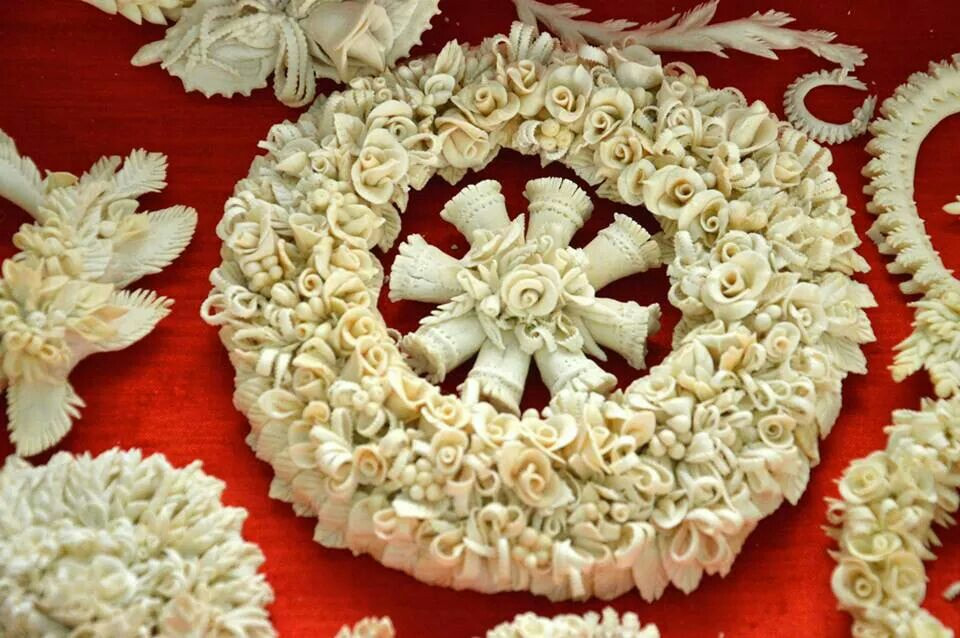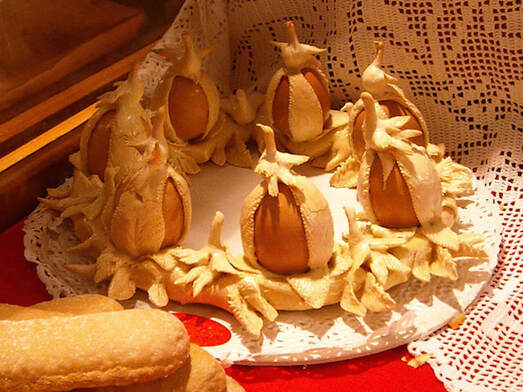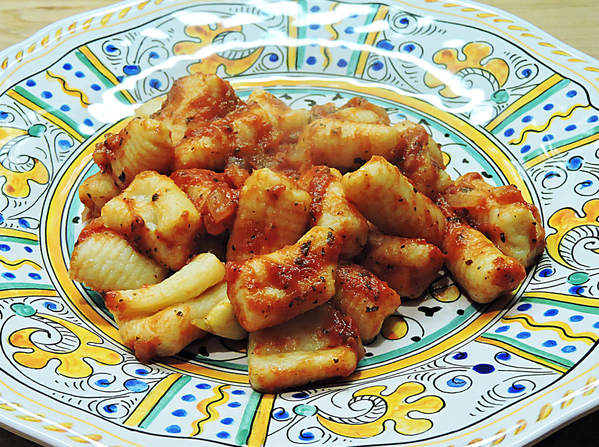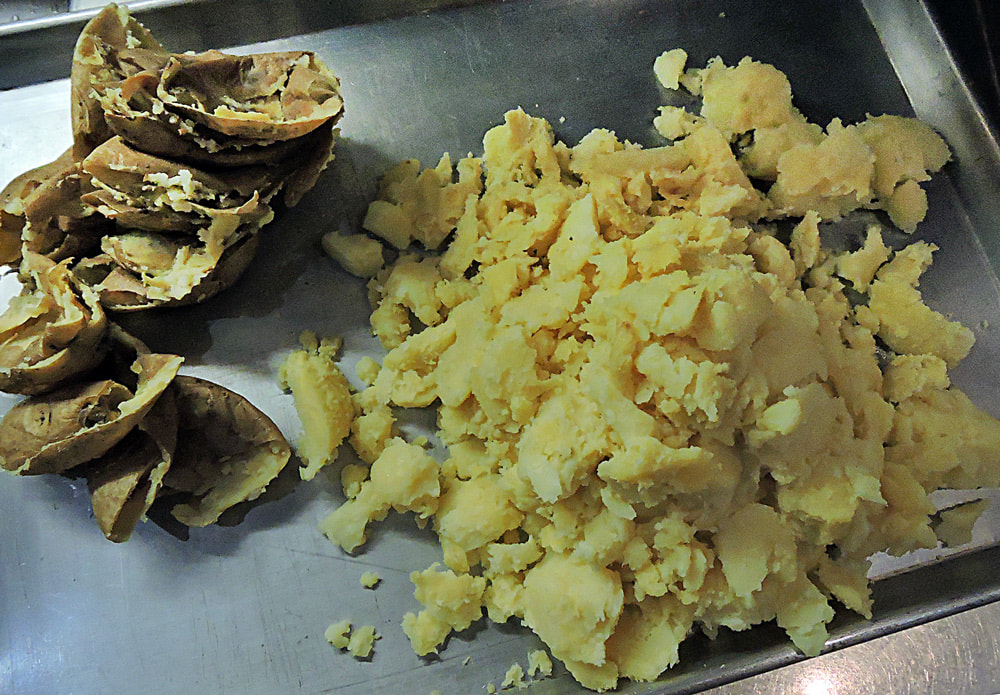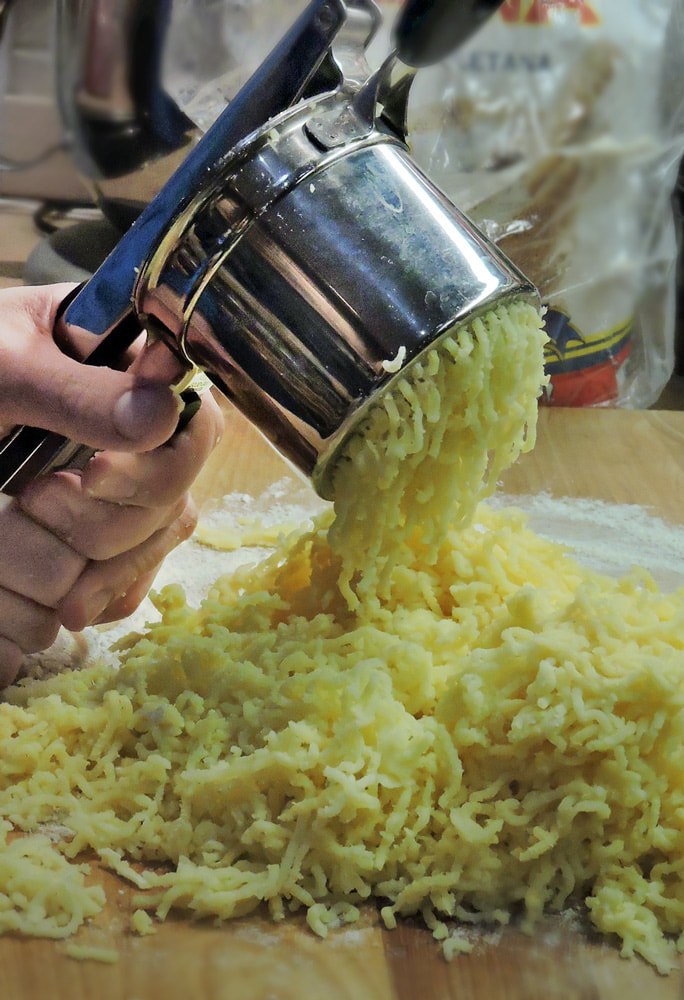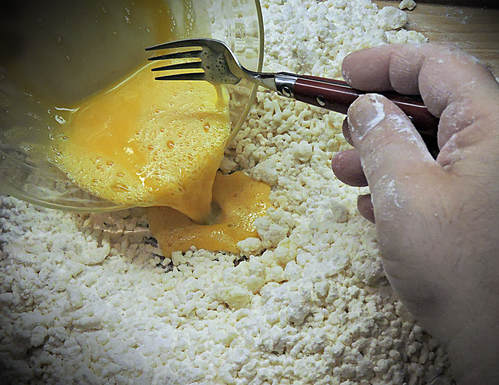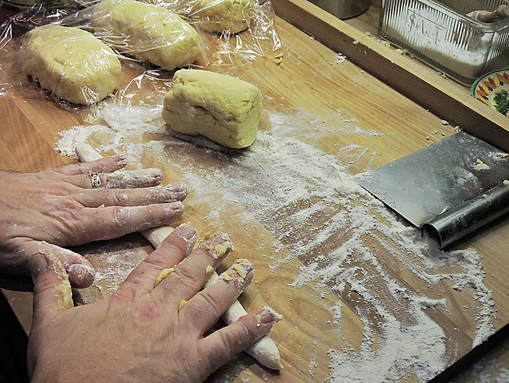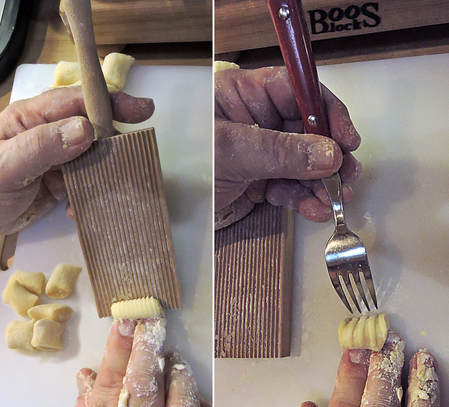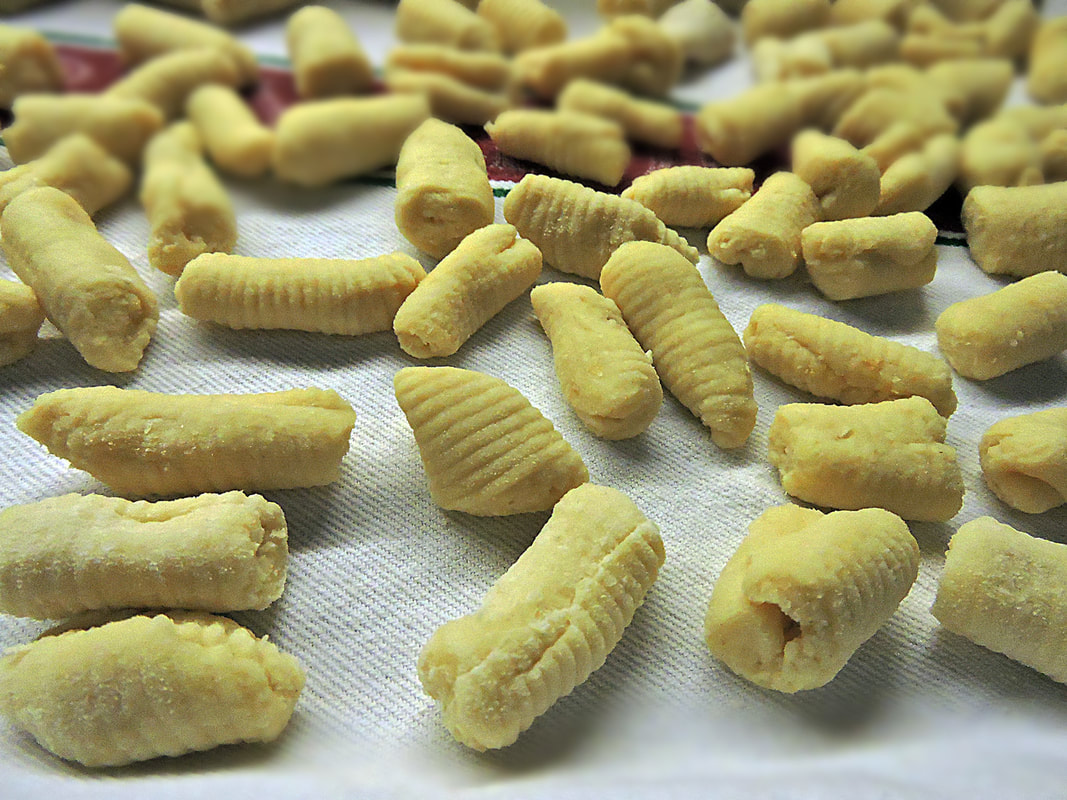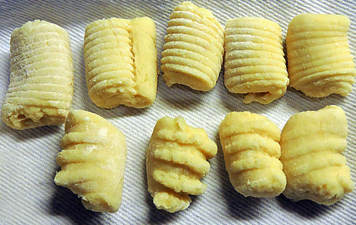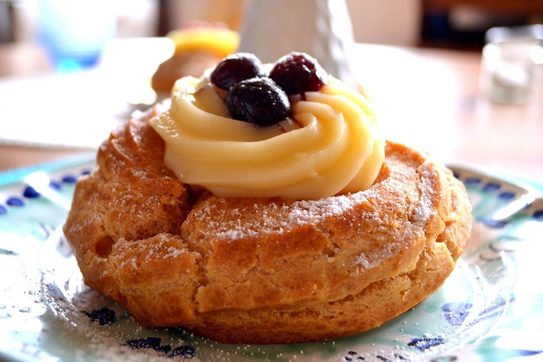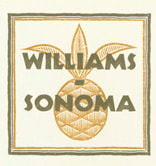|
Chie hat pane mai non morit.--Sardinia Proverb
One who has bread never dies.
In Sardinian bakeries there is a time honored tradition of elaborate and intricate decoration of celebration breads for weddings and also for Pasqua (Easter), called
Pane Pasquelina, or in local dialect known as Su Coccoi or Pane Coccoi. The designs recall ancient symbols from the many cultural influences in Sardinia. The shapes include the crown, wreathes, the chick, a girl, doves, fish, small baskets, fruits and flowers. Especially for Easter, whole eggs are incorporated into each design, sometimes hidden but often exposed within the design theme. These breads are considered symbols of fertility and good luck. When you look at the intricacies of these artisinal breads, it's surprising to think the only tools used are a small knife and scissors.
Two interesting shapes are called Sa Pippia and Lazzaro. Sa Pippia is a doll-shaped bread with seven legs, one for each day of the Holy Week. This bread was used as an Easter Advent Calendar, one leg given to a child each day leading up to Easter Sunday. Lazzaro represents the body of Lazarus wrapped in a shroud, a symbol of resurrection.
Watch as the Nonni teach the younger women how to create Pane Coccoi
and then bake them in a community oven.
If you'd like to try making these special breads, here is an authentic Sardinian recipe that I translated and converted...
Recipe
Shaping the Dough
Baking Preheat your oven to 450 F degrees with the pizza stone on the middle rack. Place a sheet pan on the bottom or lowest rack of your oven at this point. I suggest using a pizza peel to transfer your breads into the oven and directly onto the pizza stone. If you don't have one, you can use an up-turned sheet pan lined with parchment paper (the paper will slide onto the stone with the dough). Alternately, sprinkle the back of the sheet pan with course cornmeal, then place your shaped breads on top. The cornmeal acts like ball bearings to slide your breads onto the stone. I don't recommend baking your breads on pans simply because the pans would be cold when placed into the oven. If you do want to use pans instead of a pizza stone, use sturdy, heavy dark pans. They will heat up faster. Just before placing your breads into your oven, pour about 1/4 cup of water into the hot sheet pan on the lower rack to create steam. Immediately shut the oven door. Quickly transferring your formed breads into the oven, bake for the first 10 minutes at 450 degrees, then lower the temperature to 350 F degrees and continue cooking for another 20-25 minutes. You might want to quickly spray some water onto the oven's side walls halfway through the baking. Check the browning of the bread and adjust according to your oven. These breads should be a very light tan with a fine textured crumb interior. Remove from the oven and place on cooling racks to dry and cool completely. There is another version that adds eggs, so you can experiment in adding eggs while you compensate by adding more flour. You can still eyeball the smoothness and elasticity of the dough when mixing. Remember, making dough for breads and pizza is a feel thing, varying depending on the humidity of the day. Have a great celebration! Buona Pasqua! --Jerry Finzi
You might also be interested in...
Our Pane di Pasqua Recipe Vintage Italian Easter Cards Decorated Italian Easter Eggs How Italians Celebrate Easter Celebrating Easter in Italy
SHARE ON YOUR SOCIAL MEDIA SITE
I remember one of the first times I had potato gnocchi (pronounced "NYO-kee"), was at a New Jersey, Italian-American restaurant when I was a teen. I wasn't impressed. They were gluey and heavy. Perhaps they were frozen, but more than likely they had lost something in the translation from the old country. Still today, people in New Jersey might still pronounce them, "Nocky". In our family, we didn't have gnocchi until I was older. I remember one of my sisters making them on occasion. We nicknamed them, "sinkers" because they were so heavy. Well into my 30s, and after I had learned how to cook pretty well, I asked my mother to teach me to make gnocchi--especially after learning that her mother, Nonna Mariantonia, had taught her. When I asked why she never made them when I was a kid, she just shrugged and said, "Sure, with all the free time I had raising five kids plus working all day?" She's right. She worked in a factory as a supervisor her whole adult life, yet somehow still managed to put dinner on the table for us after she got home. Better late than never, and I was eager to learn...
Ingredients (for two batches: one for eating fresh, the other for freezing) 4 pounds of Yukon Gold or similar yellow potato--stored 1 week in a dark place before using 1 egg yolk 2 whole eggs, beaten 2 tablespoons sea salt "00" Italian style flour - 1/4 cup per pound of potatoes (or more, depending on humidity) ("00" makes a more tender gnocchi.) Equipment needed a Gnocchi board, or fork, fingers, or the back side of a cheese grater (each makes a different shape/texture) 2 half sheet pans (For drying and for freezing half the batch) Potato ricer (Do not use a masher) cotton kitchen towels or parchment paper My Mom didn't use a gnocchi paddle, or rigagnocchi. She used her fingers and the back of a fork. She actually taught me two methods for two different shapes--the back of a fork and her first two fingers. The fork makes ridges on the back side---good for holding a thick ragu. The two fingers made a sort of cavetelli shape, by taking a small cylinder of dough and pressing into it while dragging toward herself on the work surface. This made one smooth side and a little cave in the other--good for cream and thinner sauces. I can still remember Mom's bent, arthritic fingers rapidly producing them one by one. In this recipe, I'll be shaping with a fork and gnocchi board. Instructions
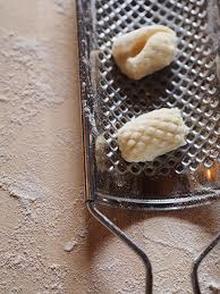 The reverse side of a cheese grater makes a raised nub texture The reverse side of a cheese grater makes a raised nub texture Shaping Gnocchi As you shape your gnocchi, place them (not touching) on a cotton kitchen towel spread on top of a half sheet pan. Let them dry for 15 for about 1 hour before cooking. Then place them into a large pot of well-salted, rapidly boiling water, give a couple of gentle stirs, then cook until they all float to the top. After all are floating, cook for another minute, then drain in batches using a spider, placing them into either a saucepan containing your preferred sauce, cooking and turning gently for a minute or two until the gnocchi have absorbed the sauce's flavors. Turn out into a pasta bowl, and top with your favorite cheese--Parmigiano-Reggiano, Pecorino, cacciocavallo, etc. Freezing the Second Half of The Gnocchi
After the first half of your dough is finished, repeat and fill a second sheet pan, then let dry as with the first batch. The second pan can then be placed immediately into a freezer for a future meal. (If a half sheet pan won't fit, place the gnocchi on smaller trays that will fit). After they are frozen rock solid (at least 10 hours), immediately place them into a large zip-lock plastic bag, squeeze to remove all the air and zip it closed. To prevent against freezer burn, place it into a second bag. Once you hone your gnocchi-making skills, you can experiment with all sorts of different types--pumpkin, sweet potato, carrot, ricotta and more. Gnocchi are great with both simple sauces (like butter & sage or olive oil, garlic and pepperoncino) or complex sauces like bechamel, pestos or even ragu Bolognese. Enjoy, and don't forget to let me know how yours turned out! --Jerry Finzi 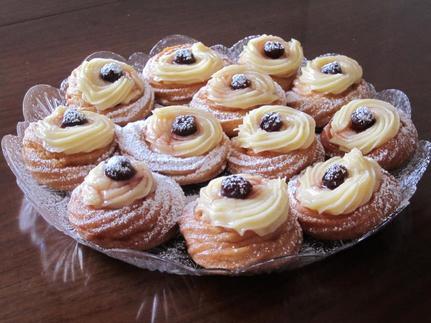 Ingredients For the Custard
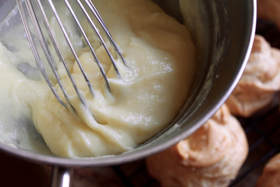 Directions Custard Cream
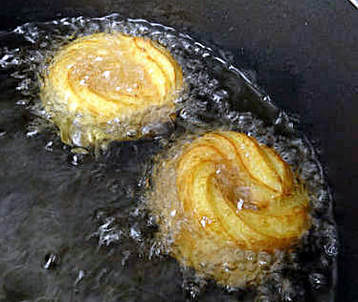 Zeppole
Buon appetito! --Jerry Finzi |
Archives
May 2024
Categories
All
|

